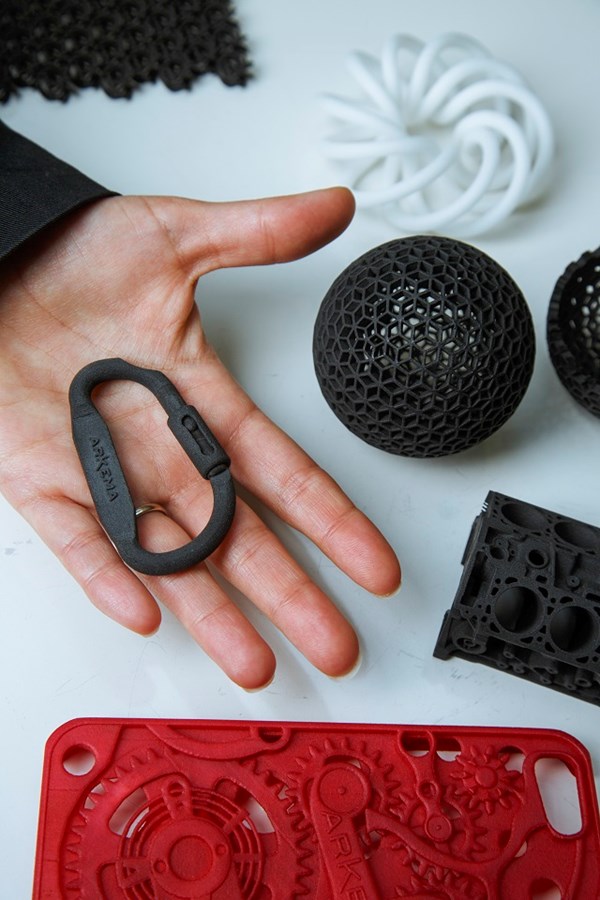One of the First Biobased Nylons Turns 70
Despite its advancing age, an ÔÇťexciting futureÔÇŁ is forecast for ArkemaÔÇÖs Rilsan Nylon 11.

We have been reporting on new bioplastics for the last several years and more recently, I have blogged about new developments unveiled at the SPC Bioplastics Converge conference. We have also reported on the ‘greening’ of engineering thermoplastics—a cover story that appeared in our May 2015 issue.
In that article, I noted that most of the commercial activity has been focused on nylons and polyesters, though some are directed towards higher-end TPEs and TPUs. The nylons appear to have the longest run, though, and I thought it worthwhile to highlight the 70th anniversary of the invention of Arkema’s flagship Rilsan nylon 11 series of high-performance polymers, whose feedstock source is derived 100% from the oil castor bean (pictured at top)—making it among the earliest members of the biobased nylon family of polymers.
And, despite its advancing age, the company sees nothing more than “an exciting future” for these polymers. “Today Rilsan PA11 is known across the globe for being one of the world’s highest performing specialty polymers—the brand has become synonymous with differentiated performance as well as being 100 percent biobased,” says Kevin Hanrahan, chief marketing officer for Arkema’s Technical Polymers. “But the brand came from humble and challenging origins.”
Arkema shared the history of Rilsan nylon 11 in 7 key dates:
ÔŚĆ June 1947—First patent, commercialized by a small French firm called Organico.
ÔŚĆ 1949—Nylon 11 makes its market debut under the brand name Rilsan; Serquigny plant is built.
ÔŚĆ 1950’s—The automaker Citroen is one of the first to grasp the potential of the new plastic, using it to make the fuel lines of the legendary DS.
ÔŚĆ 1970—Production begins in the U.S. (Birdsboro, Penn.)
ÔŚĆ 1980’s and 1990’s—Rilsan nylon11 becomes the reference for many automotive oil & gas applications.
ÔŚĆ 2000’s—3D printing, advanced composites, lightweight sports equipment, and metal replacement are common development themes
ÔŚĆ 2013—Production begins in China (Zhangjiagang).
The first commercial batch was made in 1947 in a repurposed spinning mill called ‘La Dame Blanche’ in Serquigny, France. (Gosh, that name is reminiscent of Brando yelling ‘STELLA’ in Tennesse Williams’ Streetcar Named Desire). According to Arkema, these historic first steps were taken during very difficult times.
The desperate conditions of post-World War II forced the original inventors to work under extremely adverse conditions. Each harrowing step of the Rilsan pioneers is richly documented in Arkema’s digital museum.
Arkema also recorded the evolution of the material’s original applications via a series of advertisements and promotions. From humble beginnings in textiles, fibers, brushes and pipes, the polymer quickly gained recognition in specialized applications driven by its early unique set of extreme performance properties.
Rilsan nylon 11’s birthday celebration was officially kicked off at Arkema’s Serquigny production facility and research center on June 10th. Erwoan Pezron, global president for Arkema’s Technical Polymers, reflected not only on the rich legacy of the Rilsan polymer family, but on its exciting future.
“The rapidly evolving world in which we live presents more and more opportunities for continued growth…Rilsan polymers are now produced in all three major regions—Europe, North America, and Asia. And we are ready to meet many of tomorrow’s challenges today—such as lightweight metal replacement for the automotive industry, additive manufacturing (3D printing), and sports equipment that helps athletes break records. The first 70 years have prepared us well.”

Related Content
KraussMaffei Nears Completion of Corporate Headquarters Move
The 185-yr old German maker of plastics processing machinery is shifting to a more than 200,000-m2 greenfield site in Parsdorf.
Read MoreHow 3D Printing Supports Toolmaking Workforce at This Multiscale Molder
At more than a century old, General Pattern has seen multiple evolutions in its ┤ˇ¤ˇ┤ź├Ż — the latest of which is the embrace of additive manufacturing technologies for mold tooling and beyond.
Read MoreNPE 2024: Additive Manufacturing Assisting, Advancing Plastics Processing
Exhibitors and presenters at the plastics show emphasized 3D printing as a complement and aid to more traditional production processes.
Read More5 Trends in 3D Printed Injection Mold Tooling
3D printing has moved beyond conformal cooling, and is now being applied to injection molds more broadly. Observations on additively manufactured mold tooling from the Plastics Technology Expo — PTXPO 2025.
Read MoreRead Next
Making the Circular Economy a Reality
Driven by brand owner demands and new worldwide legislation, the entire supply chain is working toward the shift to circularity, with some evidence the circular economy has already begun.
Read MoreBeyond Prototypes: 8 Ways the Plastics Industry Is Using 3D Printing
Plastics processors are finding applications for 3D printing around the plant and across the supply chain. Here are 8 examples to look for at NPE2024.
Read More












